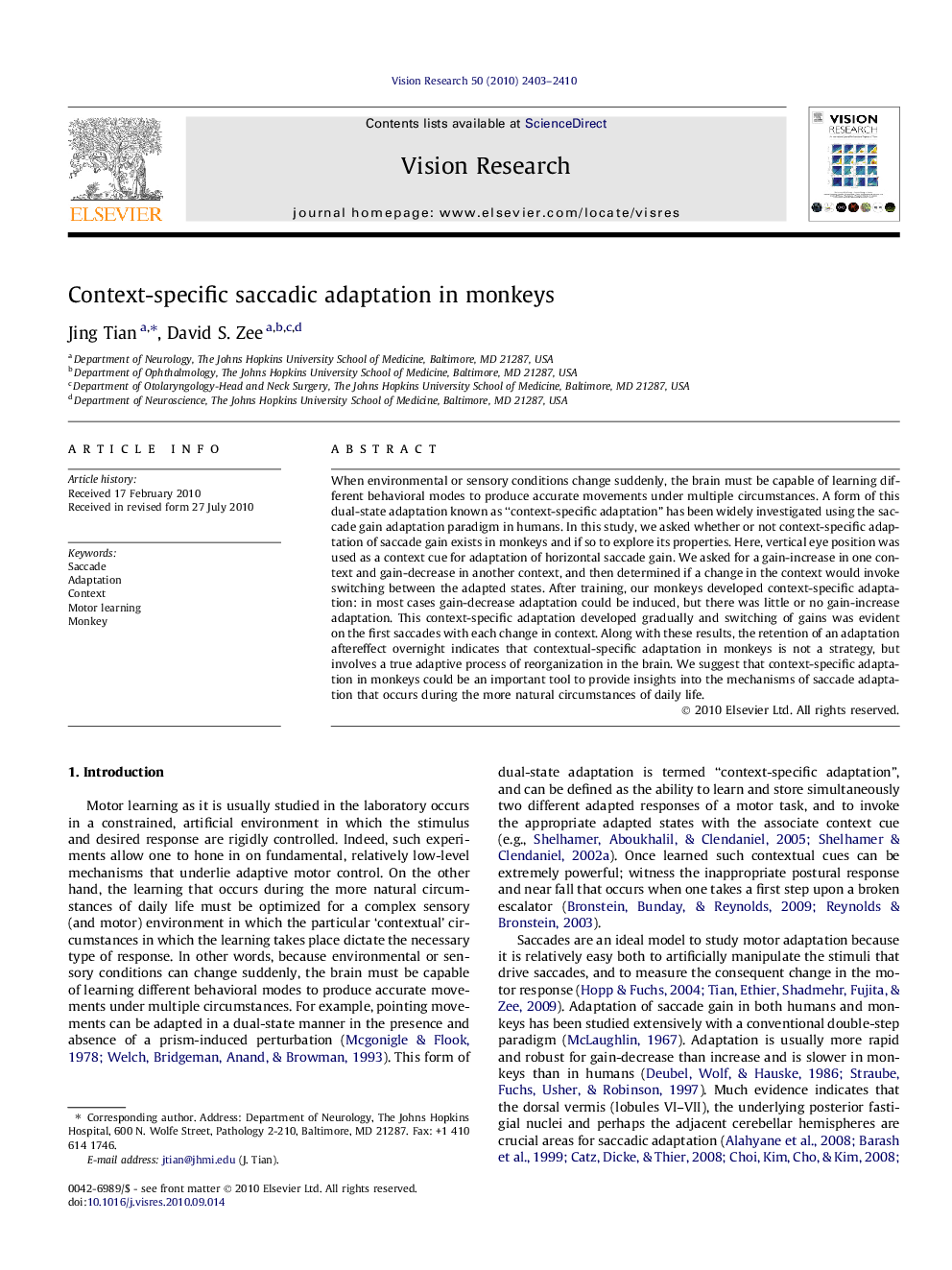| Article ID | Journal | Published Year | Pages | File Type |
|---|---|---|---|---|
| 6203805 | Vision Research | 2010 | 8 Pages |
When environmental or sensory conditions change suddenly, the brain must be capable of learning different behavioral modes to produce accurate movements under multiple circumstances. A form of this dual-state adaptation known as “context-specific adaptation” has been widely investigated using the saccade gain adaptation paradigm in humans. In this study, we asked whether or not context-specific adaptation of saccade gain exists in monkeys and if so to explore its properties. Here, vertical eye position was used as a context cue for adaptation of horizontal saccade gain. We asked for a gain-increase in one context and gain-decrease in another context, and then determined if a change in the context would invoke switching between the adapted states. After training, our monkeys developed context-specific adaptation: in most cases gain-decrease adaptation could be induced, but there was little or no gain-increase adaptation. This context-specific adaptation developed gradually and switching of gains was evident on the first saccades with each change in context. Along with these results, the retention of an adaptation aftereffect overnight indicates that contextual-specific adaptation in monkeys is not a strategy, but involves a true adaptive process of reorganization in the brain. We suggest that context-specific adaptation in monkeys could be an important tool to provide insights into the mechanisms of saccade adaptation that occurs during the more natural circumstances of daily life.
Research highlights⺠Context-specific adaptation of saccade gain exists in monkeys. ⺠Switching of gains is evident on the first saccades with each change in context. ⺠Retention of aftereffect indicates a true adaptive process of brain reorganization.
